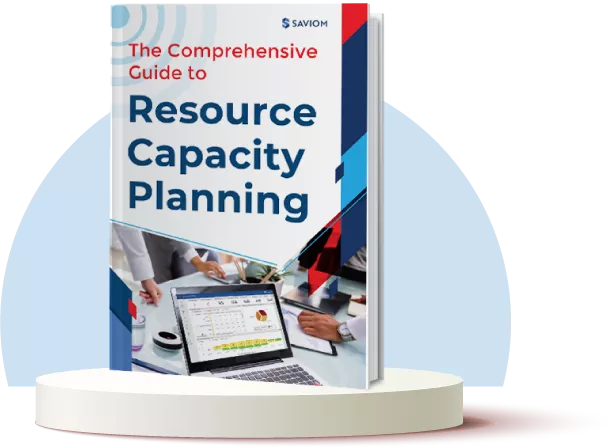“Productivity is never an accident. It is always the result of a commitment to excellence, intelligent planning, and focused effort.” ~ Paul J. Meyer, motivational speaker.
Employee productivity is the engine that drives the economic success of an organization. Therefore, it’s critical for businesses to track employee productivity to ensure everyone is operating at peak performance and working towards common organizational goals.
It’s important to note that tracking employee productivity goes beyond simply clocking hours. It involves analyzing key performance indicators, time management, and the overall output of your team while also identifying areas where they can improve. For this, firms can use various methods, from traditional time-tracking approaches to more modern strategies like outcome-based assessments.
In this blog, we will explore proven techniques that will help you accurately track employee productivity.
Let’s begin!
Why is it Essential to Track Employee Productivity for Firms?
According to a study by Slack, “71% of business leaders face pressure from executives to boost employee productivity.”
Organizations track employee productivity because it directly impacts their ability to meet objectives, drive growth, and maintain competitiveness in their industry. One of the primary benefits of productivity tracking is that it helps supervisors assess how employees spend their time and monitor their engagement levels. It allows them to identify and course-correct operational inefficiencies and skill gaps. This timely intervention helps optimize individual and team performance, reduce operational costs, and, in turn, boost profitability.
In addition, tracking productivity allows managers to monitor attendance and spot patterns of unplanned absenteeism . Consequently, they can investigate the root causes and take proactive steps to improve employee engagement . Besides, monitoring productivity levels helps managers gauge project and task progress. It also helps them improve future estimations and set realistic performance goals and benchmarks.
Lastly, productivity tracking provides critical data that enables decision-makers to ensure fair employee performance appraisals , fostering a positive, inclusive workplace. These attributes collectively help businesses enhance organizational efficiency and boost profit margins.
Let us learn more about effective ways to track employee productivity.
Read more: Employee Productivity: What is it & Why Does it Matter?
7 Effective Ways to Track Employee Productivityevery role and type of employment,
Tracking employee productivity helps improve the efficiency of resources and drives engagement. In this section, we’ll explore seven effective ways to track employee productivity.
Establish a Productivity Baseline for Employees
Organizations must establish productivity baselines for every role and type of employment, including permanent, contingent, full-time, and part-time employees. This practice enables managers to accurately measure the qualitative and quantitative performance of individual employees. Additionally, setting these baselines ensures that performance expectations are aligned with the specific responsibilities and contributions of each role.
For instance, in a content marketing team with both full-time and part-time writers, managers can create separate productivity baselines tailored to each group. A full-time content writer may have a baseline of 70% productivity for direct task-related work. This allows time for BAU activities, which consume a portion of their workday. In contrast, part-time writers may have a baseline closer to 90% as they typically spend a smaller percentage of their time on BAU work. This distinction ensures fair expectations and consistent output across different resource types.
Track Task Completion and Analyze Work Quality
Effectively monitoring employee productivity requires a focus on both task completion and work quality . By examining both aspects, managers can determine whether employees are meeting deadlines and maintaining high standards of excellence. This approach also ensures that projects progress smoothly and that any delays or quality issues are quickly identified and addressed.
For example, if an employee completes five tasks in one hour but the quality is lacking, then the productivity may be questionable.
Conversely, if another employee delivers three tasks in two hours with high quality, it demonstrates higher productivity. This balanced evaluation helps in accurately assessing performance and fostering continuous improvement.
Read more: How Resource Optimization Boosts Task Management?
Monitor Timesheets and Measure Employee Attendance
“Time is the scarcest resource, and unless it is managed, nothing else can be managed.” ~ Peter Drucker
By keeping an eye on the timesheets and employee attendance, managers can gain valuable insights into productivity patterns . Tracking logged hours, breaks, and attendance helps identify patterns like absenteeism or tardiness that may affect team efficiency. Additionally, comparing time spent on tasks with output allows managers to assess how efficiently employees complete their work.
Timesheet analysis can highlight tasks that take longer than expected or reveal productivity gaps that need attention. This helps managers optimize resource allocation, adjust workloads, and offer targeted support or training to boost performance.
Schedule Regular Performance Reviews
According to a study by Betterworks, “Companies are 44% better at retaining top talent when they have a continuous performance feedback program in place.”
To know how productive the employees are, it is essential to conduct monthly/quarterly/annual performance reviews. This will allow the managers to evaluate their individual contributions and productivity levels and identify areas for improvement. These reviews also provide employees with valuable feedback on their performance.
For example, a consulting firm noticed a decline in project delivery speed. After conducting quarterly performance reviews, they identified that a lack of clarity in task assignments was slowing down progress. By providing constructive feedback, setting clear expectations, and clarifying the tasks, the firm saw a 20% increase in delivery efficiency within the next quarter.
Read more: What is Employee Performance Management, and Why it is Important?
Gather Feedback from Project Stakeholders
When a resource works on-site at a client location, maintaining direct visibility into their daily performance and productivity can be difficult for managers. In such cases, gathering regular feedback from project stakeholders or clients becomes critical to bridging this oversight gap.
For instance, clients can share observations on the resource’s punctuality, problem-solving ability, communication, and how well they adapt to the client’s work environment and expectations. By incorporating these detailed inputs into your performance review process, you can identify misalignments between on-site performance and project goals and offer corrective support early on.
Conduct Employee Self-Assessments
Employee self-assessments are a valuable tool for gaining insights into an individual’s perception of their own performance, strengths, and areas for improvement. This process encourages employees to reflect on their contributions, productivity, and challenges, fostering a sense of accountability and self-awareness.
To conduct this, organizations can use structured tools like surveys, forms, or self-assessment software. Questions should address both quantitative metrics (e.g., number of tasks completed) and qualitative aspects (e.g., handling challenges, communication, etc.). This way, self-assessments provide a more holistic view of performance, opening constructive conversations about expectations, development opportunities, and future goals.
Leverage an Employee Productivity Tracker
As a study by HR Morning reveals, “An employee productivity tracker assists managers by 79% to gain a better understanding of how employees use their time”.
An employee productivity tracker is a tool that monitors and evaluates how employees spend their time at work. Major features include time tracking, task management, performance analytics, automated alerts and notifications, activity and attendance monitoring, etc. These features help managers gain detailed insights into employees’ time usage, task completion, and overall productivity.
Thus, by leveraging an employee productivity tracker, businesses can enhance visibility into work processes, improve time management, and optimize resource utilization. It also enables managers to make data-driven decisions that can boost both individual and team performance.
Read more: Top 10 Business Benefits of Training Scheduling Software
Final Thoughts
In today’s rapidly evolving business landscape, tracking and enhancing employee productivity is crucial for long-term success. It helps maximize resource potential, address discrepancies, and improve project delivery.
By implementing these strategies, organizations can monitor and boost productivity, ensuring resources are used efficiently and organizational goals are consistently met. This approach also enhances client satisfaction and maintains a competitive edge in the market.
The Glossary
READ MORE : Glossary of Resource Workforce Planning, Scheduling and Management
The SAVIOM Solution
SAVIOM is undoubtedly the market leader in offering the most powerful and configurable Enterprise Resource Management Solution. Having more than 20 years of experience, this Australian-based MNC has a global presence in over 50 countries. It is also popular with more than 100 customers and helps them to achieve their business goals. SAVIOM also has products for project portfolio management, professional service automation, and workforce planning software which can be easily customized per business requirements.









